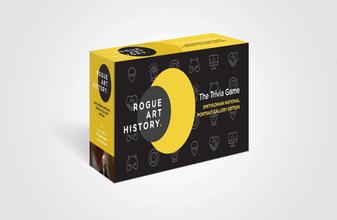More about William Henry Harrison
- All
- Info
- Shop

Contributor
While you can place Peale's William Henry Harrison, as many historians do, alongside accounts of Harrison's army defeating the British forces in the various battles of the War of 1812, as a symbol of the triumph of the U.S., keep in mind that both sides were negotiating complex national differences in order to form their alliances.
The hit song "Tippecanoe and Tyler Too," which blew up all the neighborhood ho-downs, shindigs and other functions of the U.S. expansionists long before radio, was based on a minstrel song called "Little Pig's Tail," and celebrated Harrison's performance at the Battle of Tippecanoe, against the British and their indigenous allies, in order to serve his bid for the White House. This was one of the earliest examples of propaganda, before its extreme makeover into "PR" and "optics," in the form of music in the U.S., and, like the greatest propaganda, it rewrote the story with its own cockeyed slant. Years earlier, just after the famous battle, Harrison wrote to Secretary of War William Eustis--in those days they called it the War Department, rather than the Department of Defense, because they hadn't done the PR makeover yet, and everyone knew that the Department of War was on the offense against native people in its push to expand West, rather than just defending something. Like the President says in Dr. Strangelove, "no fighting in the War Room!" Eustis understood from the letter that Harrison had lost the battle, and grilled him about his fortifications of his position. Harrison was so annoyed that he quit the military, about a year after Peale made this portrait.
In a way, the U.S. Revolutionary War did not truly end for decades, because the British didn't want to let go of their claim to the territories south of what is now Canada and north of what is now Mexico. On top of that, there was the fact that these territories have been occupied and stewarded since time immemorial by hundreds of sovereign nations or "tribes," with a wide array of cultural and linguistic differences as well as political alliances. This portrait shows the young General Harrison the final year that he led his forces against the Shawnee anti-expansionist military leader, and spiritual revivalist, Tecumseh, who tried to work with the U.S. but made a strategic alliance with the British. Tecumseh and his brother, "The Prophet" or Tenskwatawa, the latter of whom was portrayed in a great portrait by Charles Bird King, thought it was pretty crazy that European men felt entitled to this land for some reason, and preached to natives that it was necessary to build political alliances, against the strategy of U.S. and European political leaders to foster conflict between the nations. I never learned about this war in school, and I certainly didn't learn about the accounts of it from the perspective of native historians like the late Lenape Jack D. Forbes, whose people played a major role in this part of history, and who named a student community center after Tecumseh.
William Henry Harrison, like his father Benjamin V, a signatory to the Declaration of Independence, was once a British subject of the North American colonies. For people of his era, the struggle for westward expansion was also a struggle to set aside differences of Catholic vs. Protestant, British vs. German vs. Scandinavian, etc., and take up the flag of the infant United States against the British and French Empires.
Harrison's great-nephew, who also served him as a secretary, inherited this painting from him, and kept it in the Harrison family for over 100 years. Later, the painting was a gift to the Smithsonian's National Portrait Gallery from Hope Gordon Winchester, who married Herbert Lee Pratt Jr., son of the former head of Standard Oil, which evolved into ExxonMobil.
Sources
- Carter-Edwards, Dennis. "The War of 1812 Along the Detroit Frontier: A Canadian Perspective." Michigan Historical Review 13, no. 2 (Fall 1987): 25–50.
- Johnson, Troy R., Joane Nagel, and Duane Champagne. American Indian Activism: Alcatraz to the Longest Walk. Chicago: University of Illinois Press, 1997.
- Loan Exhibition of Portraits of the Signers and Deputies to the Convention of 1787 and Signers of the Declaration of Independence: Including Their Families and Associates, in Commemoration of the 150th Anniversary of the Formation of the Constitution of t
- Norton, Anthony Banning. Tippecanoe Songs of the Log Cabin Boys and Girls of 1840. Dallas, TX: Self-published, 1888.
- Owens, Robert Martin. Mr. Jefferson's Hammer: William Henry Harrison and the Origins of American Indian Policy. Norman, OK: University of Oklahoma Press, 2007.
- Skaggs, David Curtis. William Henry Harrison and the Conquest of the Ohio Country: Frontier Fighting in the War of 1812. Baltimore: JHU Press, 2014.
- Sugden, John. Tecumseh: A Life. New York: Henry Holt and Company, 2013.












